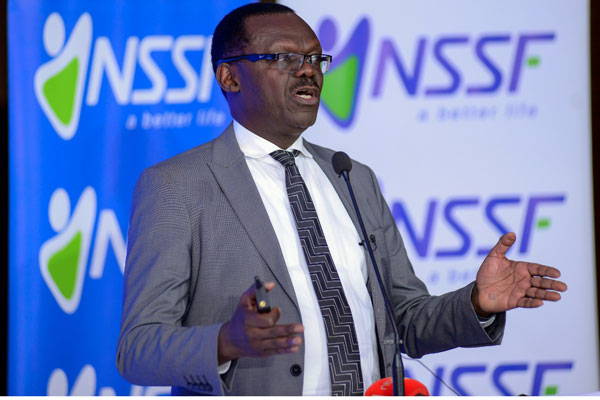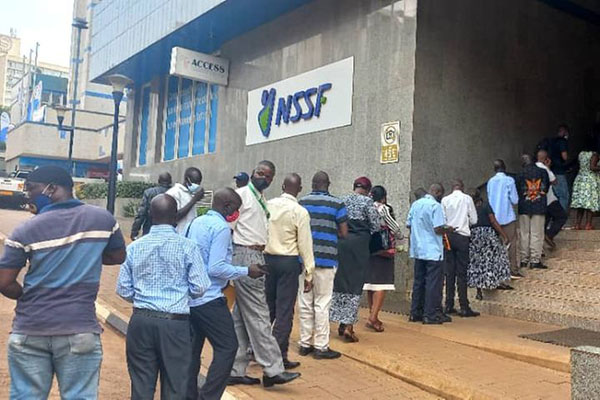Prime
NSSF investment income crosses Shs2 trillion mark

Mr Patrick Ayota says that whereas there has been challenges across the region, NSSF investments have made good returns for the year ended June. Photo Michael Kakumirizi
What you need to know:
- NSSF says it is now focusing on Vision 2035, under which it will grow member contributions to Shs50 trillion at a coverage of at least 50 percent of the working population
Income attributed to National Social Security Fund’s (NSSF) investments grew by 15 percent in the year ended June.
In details released yesterday, NSSF indicated that investment income for the 2022/23 financial years, increased from Shs1.9 trillion to Shs2.2 trillion, which suggests an increase in returns to members savings during the period.
NSSF has in the last four years registered an average increase in income of Shs350b, growing from Shs891b in the 2018/19 financial year to Shs1.47 trillion in 2019/20. The Fund further registered an increase in revenue growth to Shs1.84 trillion in the 2020/21 financial year supported by a diversified investment strategies.
Speaking during the Fund’s annual media roundtable, Mr Patrick Ayota, the NSSF managing director, attributed the growth to increased earnings from interest income, which grew from Shs1.79 trillion to Shs2 trillion and which dividend income, which increased from Shs84b to Shs139b.
Income from real estate projects slightly increased from Shs13.4b to Shs14b, while Shs16b was earned from other incomes.
“Overall, the investment environment in Uganda and the region was challenging over the last financial year. However, the Fund was able to increase its revenue owing to strategic asset allocation that enabled us to remain profitable, despite a generally depressed market,” Ayota said.
However, he noted the reduction in the value of the stock markets in Uganda and Kenya and reduction in long-term bond yields had increased pressure on the Fund’s performance.
During the period, NSSF indicated, members’ contribution increased by 15.4 percent from Shs1.49 trillion to Shs1.199 trillion, which pushed the Fund’s assets size to Shs18.58 trillion.
Mr Ayota said the Fund will continue to pay members a real return of at least 2 percentage points above, noting that the Minister of Finance would declare the interest payment during the forthcoming 11th annual members meeting due on September 26.
Equity markets across East Africa have been volatile with long-term bond and stock yield dropping.
In Uganda, the Uganda Securities Exchange local index reduced by 11.47 percent, while the Nairobi Stock Exchange all shares Index dropped 14.04 percent.
In Tanzania the Index reduced by 4.02 percent while in Rwanda it declined by 2.27 percent.
Mr Ayota said the size of the Fund increased from Shs17.26 trillion to Shs18.58 trillion, driven by an increase in member contributions, realised income, and a cost management strategy.
The Fund is projected grow further with asset under management increasing to Shs20 trillion by 2025.
Mr Ayota also noted that while the Fund’s performance remained strong, focus under Vision 2035, will be on hitting the Shs50 trillion mark in members’ saving, covering at least 50 percent of the working population.




